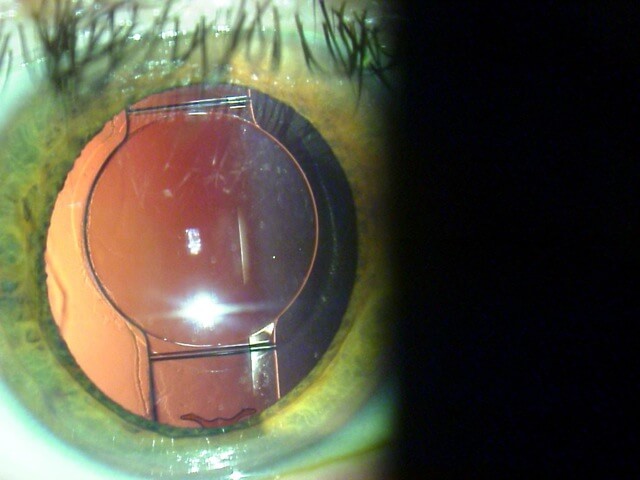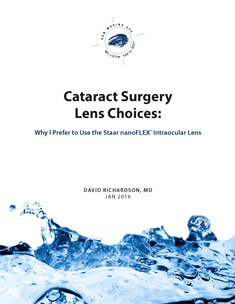I’ve mentioned the importance of Lens Epithelial Cell (LEC) “clean up” in a number of my posts in the comments sections of this blog. Based on the number of comments I’ve received on this topic I felt it was time to dedicate a post to this issue.
What are Lens Epithelial Cells?
LECs are naturally occurring cells that line the capsular bag (which holds the lens in place). Although they provide a needed function in the natural lens, they can be problematic after the natural lens has been replaced by a man-made intraocular lens (IOL).
How are LECs removed?
Very carefully. LECs line the exceedingly delicate capsular bag. If the bag were to tear the lens could dislocate or even drop into the eye. Thus, LEC removal requires the combination of a steady hand and special instrumentation (essentially tiny little curettes) to complete.
Why would I want my surgeon to remove them?
In short, because LECs can result in scarring (phimosis) of the capsular bag. Here is an image of a lens-bag complex after LEC “clean up”:


Which would you prefer?
If those images are not enough evidence to convince you of the benefit of LEC clean up then read on. Dr. Steven G. Safran (who, like me, routinely performs LEC clean up during his cataract surgeries) has graciously offered the following list of benefits of LEC clean up:
- Prevents phimosis
- Prevents late dislocations within the bag
- Prevents stress on zonules from capsule contraction
- Minimizes influence of a less than perfect rhexis (or perfect one for that matter)
- Makes future IOL exchange easier.
- Makes treating negative dysphotopsia easier if you have to (easier to YAG off the capsule edge)
- Reduces need to perform YAG capsulotomy for posterior capsular opacification (PCO)
- Reduces L.E.C growth/migration on surface of implant
- Reduces or eliminates Z-syndromes/U syndromes/ myopic shifts with Crystalens
- Makes YAGs (if they are done) much easier/less energy/less damage to implant
- May reduce risk of CME, decreased post operative inflammation and IOP
- Allows me to use less post operative steroids as there is less inflammation.
- Appears to reduce the risk of “rebound” iritis when you cut the steroids
- Makes eyes look better at the slit lamp to me and any one else who views my work.
With such an impressive list of benefits, why don’t all surgeons “clean up” the Lens Epithelial Cells?
Ah, how to answer this without being judgmental? OK, I’m simply going to provide a list of my own and let you come to your own conclusion:
- Requires extra time in the operating room (about 2-5 minutes)
- Requires extra instrumentation (at a cost to the surgeon or surgery center of $170-450 per instrument – one or two instruments needed)
- Requires extra skill as the surgeon must scrape the incredibly delicate capsular bag with a metal instrument in order to remove the LECs









Leave a Reply